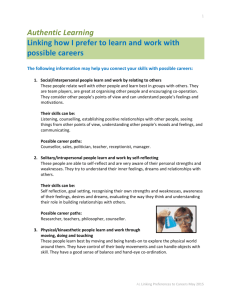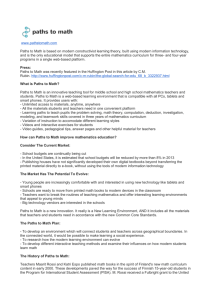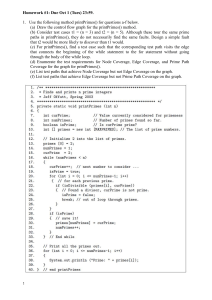Connecting the Dots
advertisement
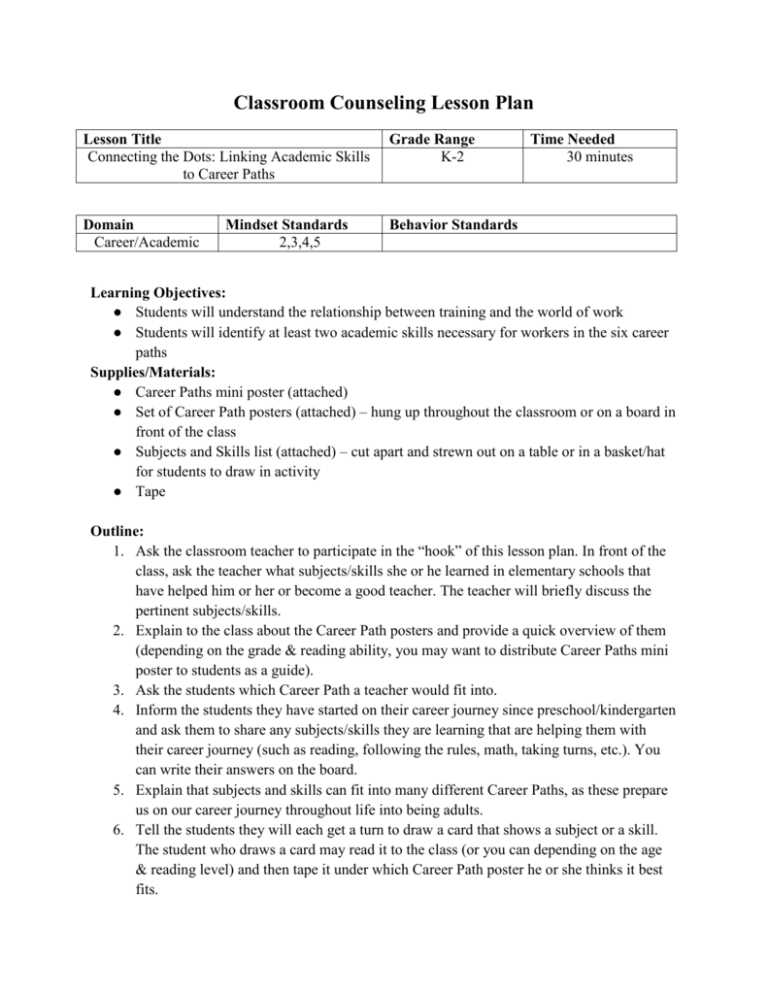
Classroom Counseling Lesson Plan Lesson Title Connecting the Dots: Linking Academic Skills to Career Paths Grade Range K-2 Domain Career/Academic Behavior Standards Mindset Standards 2,3,4,5 Time Needed 30 minutes Learning Objectives: ● Students will understand the relationship between training and the world of work ● Students will identify at least two academic skills necessary for workers in the six career paths Supplies/Materials: ● Career Paths mini poster (attached) ● Set of Career Path posters (attached) – hung up throughout the classroom or on a board in front of the class ● Subjects and Skills list (attached) – cut apart and strewn out on a table or in a basket/hat for students to draw in activity ● Tape Outline: 1. Ask the classroom teacher to participate in the “hook” of this lesson plan. In front of the class, ask the teacher what subjects/skills she or he learned in elementary schools that have helped him or her or become a good teacher. The teacher will briefly discuss the pertinent subjects/skills. 2. Explain to the class about the Career Path posters and provide a quick overview of them (depending on the grade & reading ability, you may want to distribute Career Paths mini poster to students as a guide). 3. Ask the students which Career Path a teacher would fit into. 4. Inform the students they have started on their career journey since preschool/kindergarten and ask them to share any subjects/skills they are learning that are helping them with their career journey (such as reading, following the rules, math, taking turns, etc.). You can write their answers on the board. 5. Explain that subjects and skills can fit into many different Career Paths, as these prepare us on our career journey throughout life into being adults. 6. Tell the students they will each get a turn to draw a card that shows a subject or a skill. The student who draws a card may read it to the class (or you can depending on the age & reading level) and then tape it under which Career Path poster he or she thinks it best fits. 7. Discuss with the class and the student after each subject/skill is taped up beneath a Career Path poster about the reason behind the choice and which other Career Paths it could also fit. PROCESS QUESTIONS: ● Why is it important to understand what we learn in school today will help us in a career when we are “grown up”? ● What can we do now on our career journey to help us be ready for a career when we’re older (such as try hard, understand it’s ok to make mistakes, etc.). Adapted from: Missouri Comprehensive Guidance & Counseling Programs: Linking School Success to Life Success. (n.d.). Making connections: Connecting the dots: Linking academic skills to the career paths. Career Path Mini Poster BUSINESS PATH (Business, Management & Technology) People who like to work with numbers and be organized. CREATIVE PATH (Arts & Communication) People who like to draw, write or perform. NATURE PATH (Natural Resources/Agriculture) People who like to work outdoors with plants and animals. FIXING & BUILDING AND TECHNOLOGY PATH (Industrial & Engineering Technology) People who like to figure out how things work and build things. HELPING PATH (Human Services) People who like to work with people to help make things better for others. HEALTH PATH (Health Services) People who like to care for animals and people. Business Path (Business, Management & Technology) People who like to work with numbers and be organized. Creative Path (Arts & Communication) People who like to draw, write or perform. Nature Path (Natural Resources/Agriculture) People who like to work outdoors with plants and animals. Fixing & Building and Technology Path (Industrial & Engineering Technology) People who like to figure out how things work and build things. Helping Path (Human Services) People who like to work with people to help make things better for others. Health Path (Health Services) People who like to care for animals and people. SUBJECTS AND SKILLS LIST Subjects: Reading Spelling Writing Music Computer Literacy Social Studies Mathematics Science Physical Education Health Visual Arts Skills: Following Rules Listening Finishing Work on Time Working as a Team Member Taking Turns Respecting Others and Self Problem Solving Asking Questions Encouraging Others





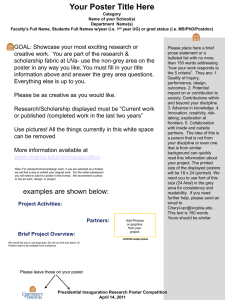


![[#GRP-871] MembershipFinder.findMemberships doesn`t appear to](http://s3.studylib.net/store/data/007422299_1-e8f5b300a55fd76701b09e629a1c1653-300x300.png)
